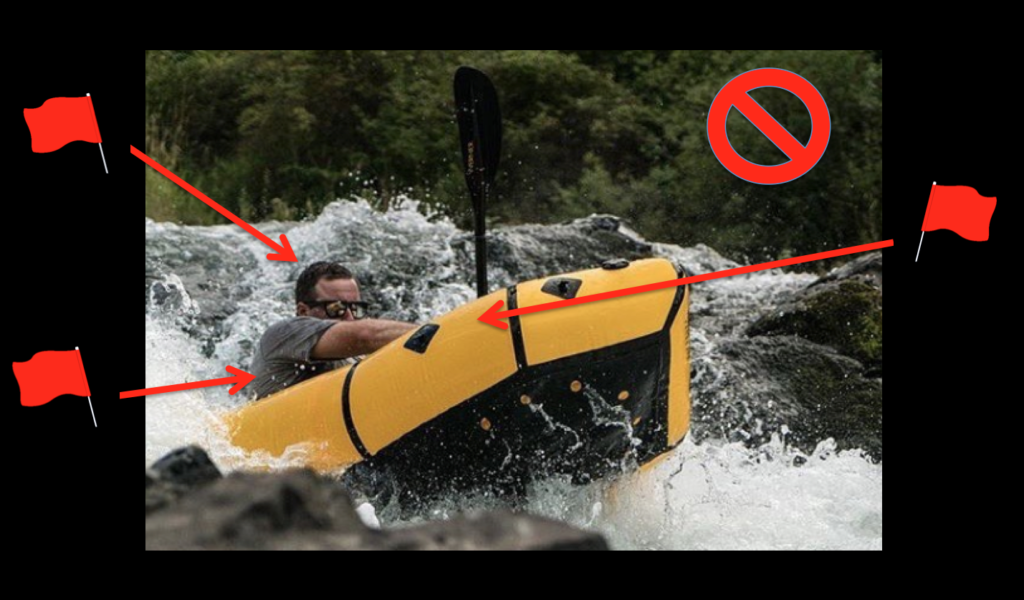Utilise the concept of ‘RED FLAGS’ to help make wise decisions. A ‘red flag’ is something that indicates the potential for increased risk during an activity. It includes anything outside of the ideal situation or normal conditions that could signal potential issues on a trip. Red flags provide an early warning that something requires attention. Once noted, they should be considered and carefully managed. Red flags often become obvious AFTER a misadventure however with careful planning you should be able to spot them and manage them prior to encountering a dangerous situation.
Swollen rivers, first descents or unknown rivers, cold water, short daylight hours, inappropriately dressed group members, an inexperienced or overconfident member in the group, or simply paddling with people that you have little experience with, are ALL potential red flags.

For example in the image above you can see a paddler in whitewater without both a helmet and PFD and no form of perimeter line on the bow. Each of these could be considered a red flag but the combination of these could indicate another larger red flag. This is that the lack of safety gear may highlight a lack of knowledge of the dangers of whitewater or a significant complacency for these dangers. It is also likely that if the paddler in this photo is not using these basic safety items then they are probably not trained in river rescue techniques nor carrying safety/rescue gear such as throwbags or river knives.
Sometimes these ‘red flags’ are only small however they can add up! Usually the the more flags you have or the ‘larger’ the flag, then the riskier the situation. And thus, the more you should consider changing the activity, your behaviour or your attitude.
If you are seeing more than a couple of flags pop up then maybe you should not be doing what you are doing! Monica Morin, who gives excellent Packraft Awareness Presentations around the US, shares some great insights in an online article for Alpacka Raft. Her article includes a helpful tool called the ‘Risky River Matrix’ that outlines the increased dangers of some of these factors. It is definitely worth checking the matrix out.
The concept of ‘Red Flags’ can be used to make decisions like whether to abort a trip due to unsafe conditions or whether to run a particular stretch of challenging or continuous whitewater.
Examples of Red Flags relevant to whitewater packrafting:
-
- High water / Flood conditions
- Unknown river
- Unknown team members
- Inexperience
- Over confidence / Complacency
- Inappropriate gear or clothing
- Insufficient time
- Remote environment
- Solo / Group of 2
- Too large a group
- Cold water
- Ambitious goal
- Ego / Peer pressure
- Poor weather
- Steep / Gorge / Difficult access
- Paddling in winter
- Limited daylight hours remaining
- Large distances
- Unknown or limited campsites
- Highly experienced backpackers/hikers who have limited experience with whitewater
Have a careful think about you next upcoming trip. What red flags can you already potentially see for it?